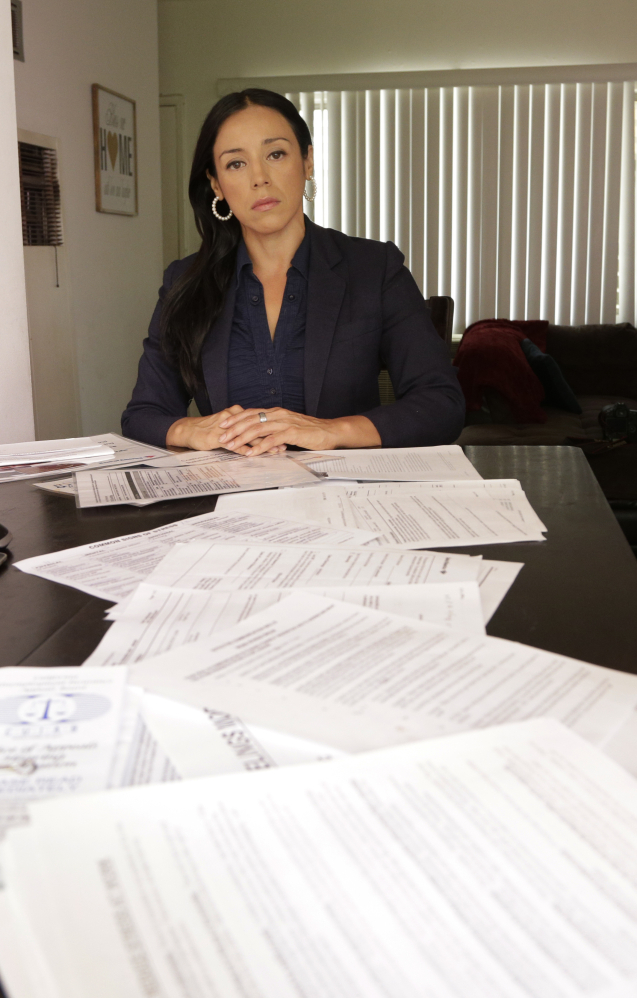Wells Fargo is facing increasing pressure to force its top executives to give back millions of dollars in bonuses earned while low-level employees allegedly set up sham accounts to meet sales quotas.
Between 2011 and 2015, when Wells Fargo has acknowledged the scheme was going on, the bank’s five highest-ranking executives accumulated $300 million in bonuses and performance awards, according to an analysis by Equilar, a research group.
The company’s longtime chief executive, John Stumpf, was awarded the most by far, $161 million, during that period, according to Equilar. Carrie Tolstedt, the former head of the company’s powerful community banking unit, was awarded more than $60 million. Tolstedt announced in July that she would retire at the end of the year, making her eligible for another bonus.
The payouts do not include the executive pensions or salary, according to Equilar.
The eye-popping figures have caught the attention of some lawmakers, who say Wells Fargo hasn’t paid a high-enough price for the alleged misdeeds. The bank paid a $185 million fine and said last week that it would investigate whether the bad behavior started before 2011 as it initially believed. But that hasn’t been enough for lawmakers, including Sen. Elizabeth Warren, D-Mass., who has called for Stumpf to resign.
The company’s compensation committee could force Stumpf to return $41 million in incentive compensation – a process known as clawbacks – that he received between 2012 and 2015, according to the Office of New York City Comptroller. The bank could claw back $19 million from Tolstedt, the department said. New York City pension funds own nearly $500 million in Wells Fargo stock, which is managed by the controller’s office.
“The scale of alleged fraud at Wells Fargo is staggering, and points to a broken culture which puts profit ahead of ethics,” said New York City Comptroller Scott Stringer. “This bank needs to regain trust from both the public and investors, and clawing back profits from senior management would be a step in the right direction.”
In a hearing last week before the Senate Banking Committee, Stumpf stumbled as lawmakers pressed him on whether he – and other company executives – would give up their bonuses. He insisted that was up to the board’s compensation committee, a comment that earned recrimination from lawmakers.
The compensation committee could make a decision on clawbacks as early as this week, according to a person familiar with those discussions who spoke on the condition of anonymity because the person is not authorized to speak about internal deliberations.
The debate comes as regulators try to finalize rules called for under the 2010 financial reform bill, known as Dodd Frank, to overhaul the way Wall Street executives are paid and address years of complaints that excessive bonuses helped lead to the 2008 financial crisis.
The long-awaited rules were aimed at stopping executives from making risky financial bets to boost their pay and then collecting large bonuses before the fallout is clear. But the banking industry is mounting a counterattack against the rules, which critics say don’t allow for enough flexibility. Some employees would be subject to clawbacks for up to 11 years after being awarded a bonus, much longer than the current industry standard of three to five years, industry officials have said.
In July, Wells Fargo joined the debate, saying it was concerned that the rules may have unintended consequences. “We have worked, and are continuing to work, diligently . . . to improve and evolve our incentive-based compensation practices,” Hope Hardison, Wells Fargo’s director of human resources, said in a letter to regulators.
But the rules would “create an un-level playing field, driving high-quality talent” away from big banks subject to the rules, she said.
Wells Fargo is preparing for what is expected to be tough questioning Thursday before the House Financial Services Committee. In addition to questions about executive compensation, Stumpf, the CEO, is likely to face questions about a recently launched Labor Department inquiry into the bank.
The Labor Department says it is conducting a “top-to-bottom review” of Wells Fargo after lawmakers complained that the bank’s workers were forced into a hyper-competitive environment that led thousands of employees to set up sham customer accounts to meet aggressive sales goals.
Wells Fargo has repeatedly apologized for the scheme, which included millions of fake accounts, and said it fired 5,300 employees over five years for such bad behavior. But lawmakers say that is not enough. Some former employees also say they were unfairly fired when they didn’t cut corners to meet Wells Fargo’s aggressive sales targets. That could violate federal rules, according to lawmakers and some labor experts.
Last week, former Wells Fargo employees who say they were fired for following the law filed a $2.6 billion class-action lawsuit against the bank.
The Labor Department said it has set up a working group to expedite a review of the issues.
“Given the serious nature of the allegations . . . I have directed enforcement agencies within the department to conduct a top-to-bottom review of cases, complaints, or violations concerning Wells Fargo over the last several years,” Labor Secretary Tom Perez said in a letter released Tuesday by Warren, who has asked the agency to look into the matter. “We take the concerns raised . . . very seriously.”
Copy the Story LinkSend questions/comments to the editors.



Success. Please wait for the page to reload. If the page does not reload within 5 seconds, please refresh the page.
Enter your email and password to access comments.
Hi, to comment on stories you must . This profile is in addition to your subscription and website login.
Already have a commenting profile? .
Invalid username/password.
Please check your email to confirm and complete your registration.
Only subscribers are eligible to post comments. Please subscribe or login first for digital access. Here’s why.
Use the form below to reset your password. When you've submitted your account email, we will send an email with a reset code.